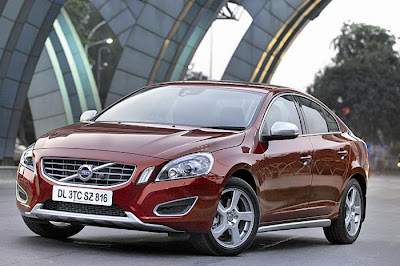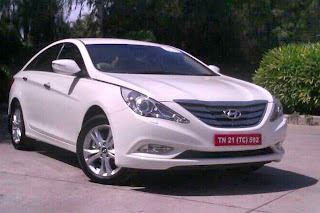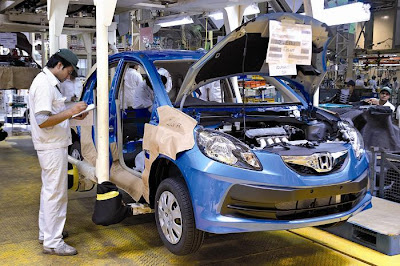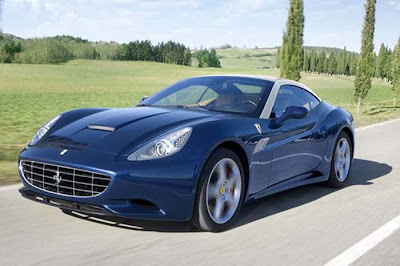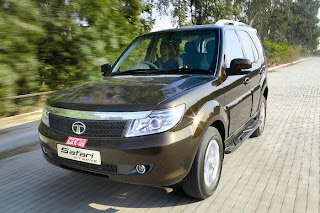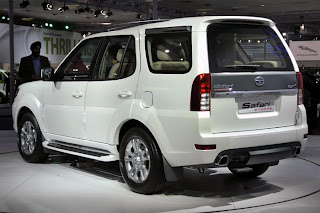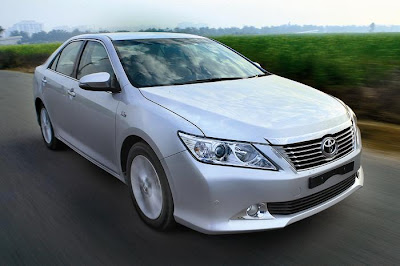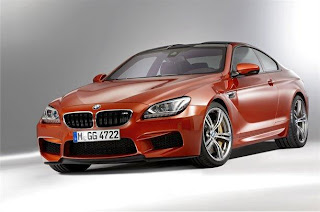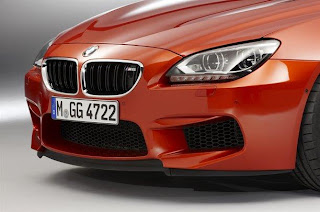Since Its launch 14 years ago at the 1998
Auto Expo, the
Safari has soldiered on pretty much unchanged. Sure it’s had its fair share of upgrades – two engine upgrades, minor facelifts, more equipment – but it’s essentially remained the same under the skin. So, when the covers came off amid much fanfare at the Auto Expo, the first impression was one of huge disappointment. We were all expecting the new Safari to look, well… new. But sadly, the Storme’s looks are nothing more than a face lift, & it’s not a significantly more handsome one at that. More of the same wine, then?
Dig deeper though & you will find serious changes. In fact, the underpinnings are all new. The old Safari’s ladder frame chassis has been ditched for a shortened version of the same modern, ladder frame that underpins the
Aria (codename: X2). A 200mm reduction from the Aria’s 2850mm wheelbase (the Storme has the identical 2650mm wheelbase of the older Safari) has actually helped in terms of torsional rigidity & weight. The hydroformed chassis of the Storme is 35kg lighter but at the same time a staggering 45 percent stiffer than the old Safari chassis.
Also improved is the suspension – gone is the old Safari’s torsion beam front end. It’s been replaced by the Aria’s double wishbone & MacPherson struts. Tata has tuned the dampers to suit the Storme’s characteristics. The steering gear is borrowed from the Aria as well & this, along with the 80mm wider track, has helped reduce the Safari’s massive 12m turning circle to a more manageable 10.8m.
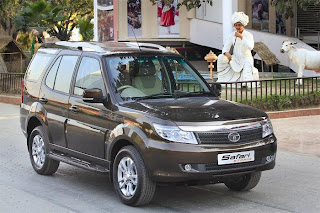
People who actually head off road will be pleased to know the Storme 4x4 has a separate transfer case with low ratios & a shift on the fly system, like on the old Safari. Tata has wisely chosen not to go with the Aria’s more road biased full time four wheel drive system. Wrapping up the mechanical changes are calibration tweaks to the 2.2 litre DiCOR motor (power & torque are the same as before) to make it more responsive, & modifications to the G76 five speed manual (it is now called the G76 MkII) for better refinement. These improvements were first effected in the Aria & hence are a carry over to the Storme.

The more obvious changes you can see for yourself. The big, squared off headlights of the old Safari give way to slimmer units housing projector lamps within. Nestled between them is a new, near vertical grey honeycomb grille, which gives the Storme a Land Rover like look. A chrome strip runs above it, livening things up. Completing the front look is the new bumper with a slim air dam which lends it a cleaner, fuss free appearance.

However, changes to the front seem out of sync with the rest of the car & when you move to the side you will be hard pressed to notice the new cladding & wider side footstep. The rear receives its fair share of changes as well. The twin chrome tipped exhausts add a bit of sportiness to the design, aided by the high mounted spoiler. The spare has been relocated to under the floor from the rear door & the door gets a chrome strip & a grey coloured band to liven things up. With all these changes to the design, the Safari retains its recognisable looks, yet appears more grown up, urban oriented & sportier. But, after 14 years, Tata should have given us nothing short of an all new design.
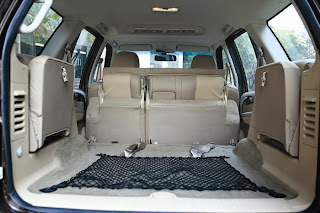
The cabin however is completely new & quality has been improved as well. Compared to the current car, you could even call the Storme’s cabin plush, & it’s the beige coloured bits that really help in this regard. The plastics are similar in quality to the Aria & even slightly better in places. The new design dash gets a revised centre console with the air conditioner on top & the music system below. However, you only get a single DIN audio system! Why?
The interiors too sport a clean look which is minimalist & mature. Fit & finish, which was the Safari’s bane in the past, has improved considerably and, unlike the previous versions which had uneven panel gaps, there is much less of it here. Although there still are a few uneven gaps in some places, the overall quality is at least a couple of notches higher.
Where the Safari excelled, & still does, is in passenger comfort levels. The sofa masquerading as a rear bench is still one of the best in the business at this price. With acres of legroom on offer, it is still a great place to kick back, relax & let the chauffer deal with the traffic. Even if you are the one driving, the firm front seats will keep you just as comfy & are perfect for those long highway drives. High seating affords a brilliant view of the proceedings ahead & looking down at the tiny hatchbacks from a high perch gives you the feeling of being invincible on the road. Making it easier to drive in the city is the steering system which is not overtly hard to turn at parking speeds & also returns more feedback on the move.
Armed with a new chassis & now boasting a stiffer suspension, the Safari hasn’t lost the plush ride quality that was its hallmark. Its lighter weight & a firmer setup is obvious when taking on corners, with the Storme exhibiting better body control. The high stance & large dimensions mean it still rolls considerably, but it feels more stable.

The 2.2 litre DiCOR engine makes the same 140bhp as before, but now feels more responsive. Keep the engine revving above the 1700 1800rpm mark, & you will be rewarded with brisk acceleration – brisk for its size, that is. We will, however, have to wait for a proper road test to find out how much quicker it has become. The gearbox the engine is mated to robs you somewhat of the driving pleasure. It isn’t the slickest or easiest to engage, though throws are relatively short & the clutch is lighter than some other SUVs we have experienced. Slowing down a vehicle of Safari’s size needs considerable braking force & the good news is that the Storme now comes with disc brakes all round & is equipped with ABS. Brake feel though reminds us of having stepped in wet mud. They feel spongy, but the Storme comes to a halt without too much drama.
While it may seem like Tata missed an opportunity in not equipping the Safari as lavishly as the Aria – which gets ESP, climate control & GPS navigation – it would have escalated the price considerably. Not something the buyers would have appreciated.
The Safari started life more than a decade ago & over the years has found lots of loyalists. But with competition in the SUV space ratcheted up several notches with the arrival of the XUV500, is the Storme a case of too little too late? After 14 years, they should have brought out a new Safari, body & all.
What you do get is a more modern car under the old skin. So, if Tata manage to keep the price down because they’ve stuck with the old design, then fair enough. The Safari still has enough appeal in it to be attractive.
Fact File
Price Range (in lakhs)*
Ex-showroom price
Rs 9-10 (estimated)
Engine
Fuel
Diesel
Installation
Front, longitudinal
Type
4-cyl, in-line, 2179cc, common-rail, turbo diesel
Bore/stroke
85.0/96.0mm
Power
140bhp at 4000rpm
Torque
32.63kgm at 1700-2700rpm
Transmission
Gearbox
5-speed manual
Dimensions
Length
4650mm
Width
1965mm
Height
1922mm
Wheel base
2650mm
Ground clearance
200mm
Chassis & Body
Tyres
235/70-R16
Suspension
Front
Independent, double wishbone, coil springs
Rear
non-independent, 5-link with coil springs
Brakes
Front
Ventilated discs
Rear
discs

